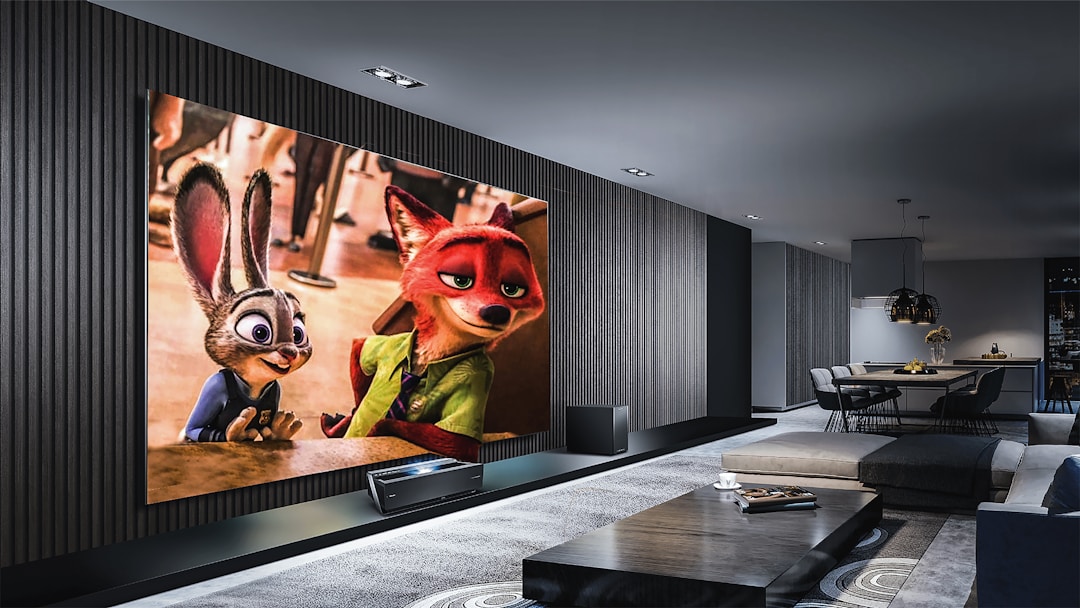Spending an evening at a movie theater can be a great way to enjoy time with family or friends. Movie enthusiasts enjoy viewing films in a theater because the sound system and screen size provide an immersive experience. It’s easy to lose yourself in the movie and enjoy a distraction from obligations.
As of 2106, 41 percent of households in the United States had a home theater system. Home theater systems have become increasingly popular because of the cost of going to the movies. Large families can watch films at home without incurring the cost of theater tickets. You can also host friends for sporting events or TV or movie-watch parties if you have a home theater. Whatever your plans for home theater, you can use these tips to make your home theater just like the real thing.
1. Invest in your theater’s construction
Ideally, you’ll find a room where you can customize a dedicated space for your theater. Converting part of your basement or modifying your garage are great options. Ideally, you’ll find a space in your home where you can block external noise that would distract you when you’re using your theater.
Soundproofing your ceiling and walls ensures you can use your theater even if family members are sleeping or studying. You’ll limit your enjoyment and use of your theater if you have to worry about keeping the volume down because of complaints from neighbors.
You can set up your theater system in your living room if you don’t have a dedicated space. You may opt to modify that room by adding blackout curtains to block sunlight. Blackout curtains can also absorb echoes, improving the sound quality when you’re using your system. You may also opt to add carpet to your living room because carpet absorbs sound and can prevent your surround sound system from disturbing people on other levels of your home or building.
2. Invest in the best equipment

When you’re learning how to create a home theater, you’ll spend a lot of time learning about the best equipment for your home theater setup. A big-screen TV is a crucial component, and you’ll want a TV with high resolution to ensure you enjoy the best picture quality. You’ll also want to invest in adjustable lighting for your home theater space. Ambient lighting can set the tone for your theater space. Installing smart lighting’s a great way to ensure you can adjust the lighting in your theater to suit your needs, enabling you to provide plenty of light when people are entering or leaving your theater and turn off the lights while you’re watching films.
Your sound system’s a crucial component of your theater. Investing in surround sound helps you create an immersive experience when using your home theater. Quality speakers provide crisp sound. Adding a subwoofer ensures you feel the sound. You’ll want to invest in an excellent receiver that enables you to feed video from different sources.
3. Invest in your environment

Enjoying your home theater is one of the advantages that come with a new thermostat. Installing a new thermostat enables you to maintain a consistent temperature in your theater. The right thermostat can also promote energy savings because you can program the thermostat to adjust the temperature when you aren’t home.
Maintaining your heating, ventilation, and air conditioning (HVAC) system also ensures your comfort in every room of your home. You won’t enjoy watching films if your theater’s too hot or cold. Having a certified HVAC technician perform routine maintenance on your HVAC system removes toxins from the air in your theater and ensures your HVAC system works efficiently, helping you maintain lower energy bills. Add comfortable seating to your theater to ensure you can sit back and relax while enjoying your home theater system.
You can make your home theater feel like a real movie theater by constructing a dedicated theater space and investing in the best equipment. You should also invest in your theater’s environment by adding comfortable seating, installing a thermostat so you can control the temperature, and eliminating airborne toxins by maintaining your HVAC system.










